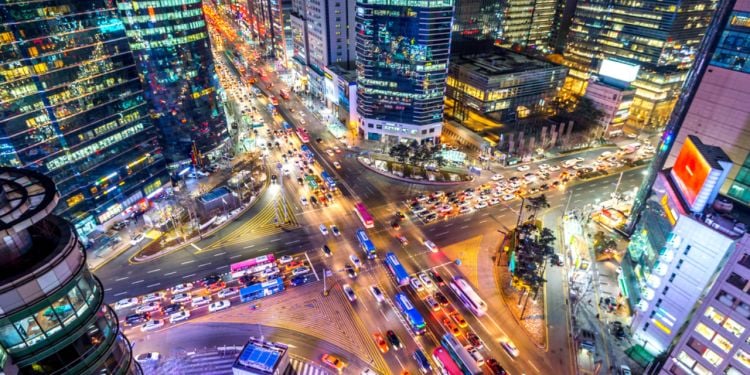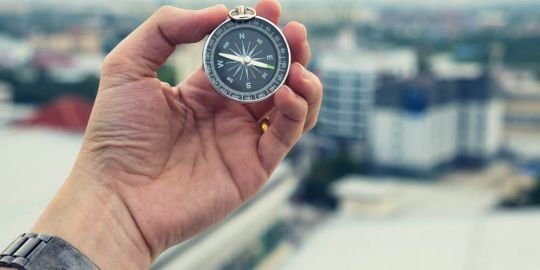Transports in Seoul

Seoul spans more than 600 km², so you will need to plan your travel accordingly, bearing in mind the peak hours which generate endless traffic jams.
Walking around Seoul
Although walking may seem an attractive prospect to discover the city, you need to take into account the sheer size of the city. The distances between two points of interest can quickly become problematic! For example, there are only two subway stations between Hongik University and Gongdeok, but the walk is 45 minutes to an hour. Walking is therefore reserved for the very enthusiastic and for short distances!
Cycling in Seoul
Seoul, like many European cities, has a bike rental system (Seoul Bike). The available bikes are easily recognisable thanks to their white, green and grey colors and the bike terminals. The service is available seven days a week and 24-hours a day. To access it, you will need to download the "Seoul Bike" application on your phone and register a phone number (Korean or foreign) with an internet connection and a credit card (Korean or foreign). The app is also available in English. Ecological and inexpensive (1,000 won per hour), this mode of transport is nevertheless somewhat limited by the frequent absence of bike lanes. To end to your journey, you must dock the bike in a dedicated terminal, so be sure to check there is space at a relevant terminal at your destination.
Cars in Seoul
Personal vehicles
Seoulites often travel by car, the mode of transport which allows the greatest autonomy and the most comfort for long journeys. Nevertheless, for this same reason, traffic in Seoul is a problem day and night. It is difficult to plan transport times from point A to point B accurately, and with pollution increasing every year in Seoul, the government has enforced an alternating traffic system for days of pollution spikes.
Parking can also be problematic, as apartment rental is not systematically accompanied by a parking space, and public parking can be expensive or insufficient.
An essential step to driving in South Korea is the international driving license, which is obtained free of charge from your prefecture under proof of your foreign driver's license.
Carpooling
Popular elsewhere in the world - is forbidden in South Korea. In recent years various companies have tried to dodge this ban (Uber, Poolus, Kakao Taxi), but options that stray too close to carpooling have not yet found favour in the eyes of the government.
Taxis
As a side-effect, taxis are numerous in busy and inexpensive neighbourhoods. It can be difficult to find a driver willing to travel a short distance (although this refusal is strictly prohibited by law) and peak hours certainly increase the difficulty. However, the "Kakao taxi" app enables you to circumvent the problem by booking online. It should be emphasised that this app is a source of dispute in South Korea and could eventually be banned in the long term, following numerous demonstrations at the end of 2018.
Public transport in Seoul
The first steps, and the most important, in terms of public transport in Seoul and more widely in South Korea is the purchase on arrival of a T Money or Cashbee card. These cards are available in Korean mini-markets (open 24 hours a day, 7 days a week) and also in airports. Once the card is purchased, it must be recharged - you can do this at the mini-market or directly at the machines available in each metro station. Be aware - to reload the card you must have cash as the machines do not accept credit cards.
Once the card is recharged you will have to validate it at the entrance to your chosen mode of transport (Metro or bus), then at the exit of the latter - you will have to pay a penalty if you forget. (You will be charged double on your next trip).
The price of the card is between 2,500 won and 5,000 won depending on the place of purchase, and each journey will cost you a base price of about 1,250 won, plus the distance travelled at the end of your trip.
Buses in Seoul
Intra-city
Seoul has a very comprehensive bus network, with more than 200 lines, crisscrossing the entire city. This mode of transport is less dependent on traffic jams than cars thanks to dedicated bus lanes. The busiest bus stops often have an English translation of the information provided. However, this is not the case for each stop, which complicates the use of bus routes for foreigners. Despite the difficulty of the language for those who do not speak Korean, applications such as GoogleMaps, Citymapper or more local options such as Naver and Kakaomaps will guide you to the bus stop you need and provide you with scheduled times. Be careful; a night bus ride costs twice as much as a day bus ride.
Inter-cities
The quality of the bus network is not limited to Seoul; there are buses travelling through South Korea that connect the different cities. You can depart from Seoul by bus and in about two hours reach the city of Sokcho on the east coast of South Korea, for example. Often cheaper than trains, this mode of transport will allow you to discover the whole country.
The railway network in Seoul
Metro
With its 17 metro lines, the Seoul rail network is probably the easiest to use when you arrive in Seoul. All metro stations have their information indicated in Korean and English, and the relevant transport applications (see above) are perfectly functional for calculating your journeys (especially the "Kakao metro" application which is very easy to use and is available in English).
Delays are rarely seen on the Seoul metro network, and the cleanliness of the trains encourages their use. Please note that pink spaces in each train are reserved for pregnant women holding cards to identify themselves in case of inspectors. These dedicated spaces must be left free, as should those spaces at the end of the car dedicated to the elderly or those with restricted mobility.
Inter-city network
Like the metro, trains connecting cities to each other are fast, reliable and well maintained. A Seoul-Busan high-speed train ride takes only 2.5 hours. Also, unlike prices seen in many European cities, tickets do not fluctuate according to the purchase period - a ticket bought four months in advance will cost the same price as a ticket bought the day of the trip.








